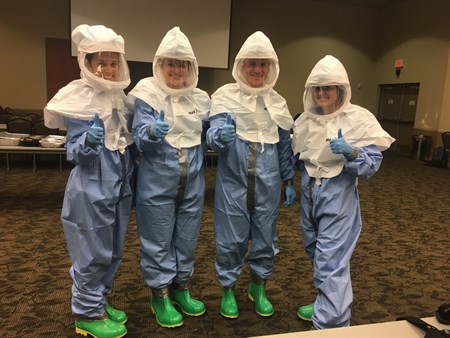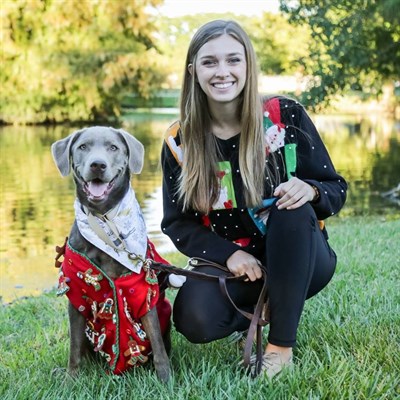
This past weekend, I had the opportunity to participate in the Veterinary Emergency Team’s (VET) annual exercise. It involved veterinarians, technicians, and other College of Veterinary Medicine & Biomedical Sciences (CVM) faculty, staff, and alumni all coming together to assist in a mock disaster situation.The scenario for the three-day event involved two different explosions in South Texas. We “deployed” in smaller (strike) teams, made our way to the disaster sites, and then set up the VET trailers (mobile medical platforms) they use during actual deployments.
Mock cases would come in over the radio and teams would walk through how they would handle each situation and treat the cases, some of which involved, cats, dogs, horses, and cattle. You have to be ready for anything in these types of situations, which is why practicing is so important.
You also have to approach them differently than an everyday clinic situation—you don’t have the same equipment or personnel, or the history of the animal. Some of the cases involved animals that were injured in the blast; some of them were animals that had been stranded and just needed help finding their owners. As you finished a case, a new case would come in.
I was the controller for my team, so my job was to give information about the patients as my team asked for it, including blood values, microchip information, and radiation readings (one scenario included an explosion at a nuclear power facility). It was an interesting situation to be in because I got to watch the teams work through each case and see the types of questions that the teams asked in each scenario.
At the end of the day, all of the teams came together for a debriefing.
We also got to practice putting on personal protective equipment (PPE), which are special hazard suits that protect you in scenarios that include known or unknown chemicals that you could be exposed to. I was able to learn how to put on the suit and felt like an astronaut!
Overall, it was a great day and I learned so much about how the VET works and responds in disaster situations.


 As a third-year veterinary student, I have been
As a third-year veterinary student, I have been